目录
一、队列的定义
队列:只允许在一端进行插入数据操作,在另一端进行删除数据操作的特殊线性表,队列具有先进先出FIFO(First In First Out)
入队列:进行插入操作的一端称为队尾(Tail/Rear)
出队列:进行删除操作的一端称为队头(Head/Front)
查看队头元素:peek
队列:java中,队列的含义被淡化了,队列使用Queue接口来表示。
java.util.Queue继承Collection(接口)
接口与类关系示意图:

二、队列的使用
(1)主要方法
| 方法 | 功能 |
| boolean offer(E e) | 入队列 |
| E poll() | 出队列 |
| peek() | 获取队头元素 |
| int size() | 获取队列中有效元素个数 |
| boolean isEmpty() | 检测队列是否为空 |
(2)实例演示
import java.util.LinkedList;
import java.util.Queue;
public class QueueDemo {
public static void main1(String[] args) {
Queue <Integer> queue =new LinkedList<>();
queue.offer(11);
queue.offer(23);//从队尾入队列
System.out.println(queue.peek());//查看队头元素,11
System.out.println(queue.size());//查看元素个数,2
System.out.println(queue.poll());//从队头出队列,并将删除元素返回,11
if(queue.isEmpty()){//判断队列是否为空
System.out.println("队列为空");
}else{
System.out.println(queue.size());
}
}
}
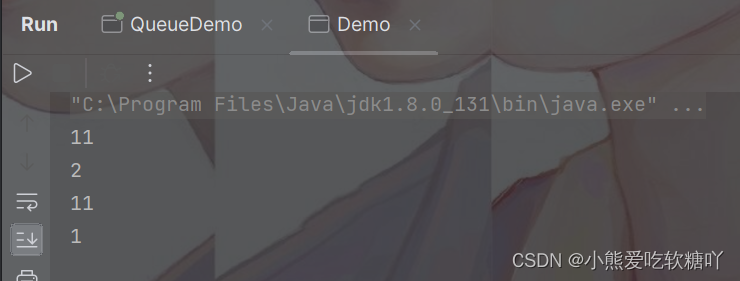 (3)注意事项
(3)注意事项
1.入队列:基本不会报错,返回true(当队列满时,入队列会出错。当我们使用LinkedList链表实现队列时。原则上人为链表是无限长,不会满。基本遇不到入队列错误。)
2.出队列:当返回值是null时,代表队列中没有元素。
3.查看队首元素:当返回值是null时,代表队列中没有元素。
三、队列的模拟实现
/*
元素类型是 long 类型
*/
public class Queue {
static class Node {
long value;
Node next;
Node(long value) {
this.value = value;
this.next = null;
}
}
// 为了方便头删 + 尾插,记录头节点 + 尾结点
private Node head;
private Node last;
private int size;
public Queue() {
this.head = this.last = null;
this.size = 0;
}
public void offer(long e) {
// 放入队列 -> 尾插
Node node = new Node(e);
if (this.last != null) {
this.last.next = node;
this.last = node;
} else {
this.head = this.last = node;
}
this.size++;
}
public long poll() {
if (size == 0) {
throw new RuntimeException("队列是空的");
}
// 记录当前队首元素
long e = this.head.value;
// 进行头删
this.head = this.head.next;
if (this.head == null) {
this.last = null;
}
size--;
return e;
}
public long peek() {
if (size == 0) {
throw new RuntimeException("队列是空的");
}
return this.head.value;
}
public int size() {
return this.size;
}
public boolean isEmpty() {
return size() != 0;
}
}
四、循环队列
(1)循环队列定义
为充分利用向量空间,克服"假溢出"现象的方法是:将向量空间想象为一个首尾相接的圆环,并称这种向量为循环向量。存储在其中的队列称为循环队列(Circular Queue)。循环队列是把顺序队列首尾相连,把存储队列元素的表从逻辑上看成一个环,成为循环队列。
假溢出:系统作为队列用的存储区还没有满,但队列却发生了溢出,我们把这种现象称为"假溢出"。
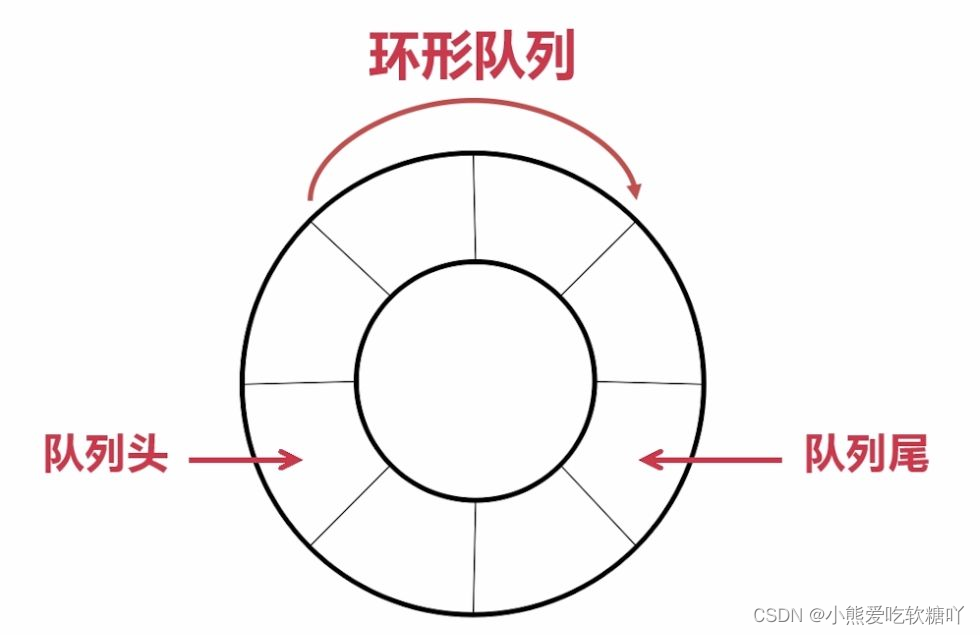 (2)循环队列的表示
(2)循环队列的表示
1.数组循环的方法
a. 下标最后再往后(offset 小于 array.length): index = (index + offset) % array.length

b. 下标最前再往前(offset 小于 array.length): index = (index + array.length - offset) % array.length
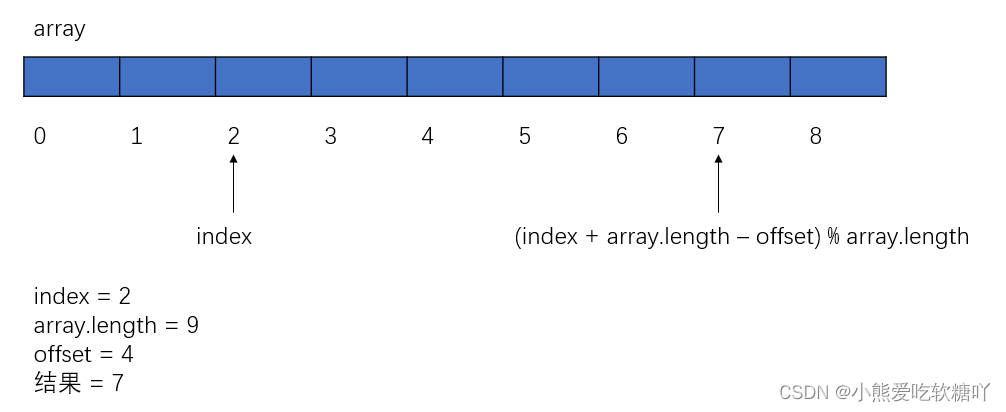
2.区分空满的方法
理论上解决的办法:
1. 通过添加 size 属性记
2. 保留一个位置
3. 使用标记
队满:rear+1=front
队空:rear=front
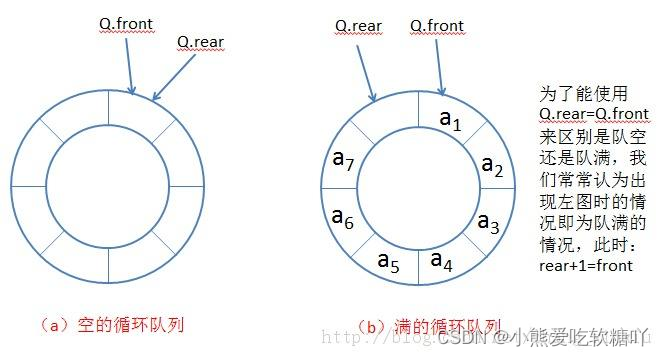
(3)循环队列的实现
设计你的循环队列实现。 循环队列是一种线性数据结构,其操作表现基于 FIFO(先进先出)原则并且队尾被连接在队首之后以形成一个循环。它也被称为“环形缓冲器”。
循环队列的一个好处是我们可以利用这个队列之前用过的空间。在一个普通队列里,一旦一个队列满了,我们就不能插入下一个元素,即使在队列前面仍有空间。但是使用循环队列,我们能使用这些空间去存储新的值。
你的实现应该支持如下操作:
MyCircularQueue(k): 构造器,设置队列长度为 k 。Front: 从队首获取元素。如果队列为空,返回 -1 。Rear: 获取队尾元素。如果队列为空,返回 -1 。enQueue(value): 向循环队列插入一个元素。如果成功插入则返回真。deQueue(): 从循环队列中删除一个元素。如果成功删除则返回真。isEmpty(): 检查循环队列是否为空。isFull(): 检查循环队列是否已满。示例:
MyCircularQueue circularQueue = new MyCircularQueue(3); // 设置长度为 3 circularQueue.enQueue(1); // 返回 true circularQueue.enQueue(2); // 返回 true circularQueue.enQueue(3); // 返回 true circularQueue.enQueue(4); // 返回 false,队列已满 circularQueue.Rear(); // 返回 3 circularQueue.isFull(); // 返回 true circularQueue.deQueue(); // 返回 true circularQueue.enQueue(4); // 返回 true circularQueue.Rear(); // 返回 4
class MyCircularQueue {
private int []array;
private int size=0;
private int frontIndex;
private int rearIndex;
public MyCircularQueue(int k) {
array=new int[k];
}
public boolean enQueue(int value) {
if(isFull()){
return false;
}
array[rearIndex]=value;
rearIndex=(rearIndex+1)%array.length;
size++;
return true;
}
public boolean deQueue() {
if(isEmpty()){
return false;
}
frontIndex+=1;
if(frontIndex==array.length){
frontIndex=0;
}
size--;
return true;
}
public int Front() {
if(isEmpty()){
return -1;
}
return array[frontIndex];
}
public int Rear() {
if(isEmpty()){
return -1;
}
int index=rearIndex;
index=(rearIndex-1+array.length)%array.length;
return array[index];
}
public boolean isEmpty() {
return size==0;
}
public boolean isFull() {
return size==array.length;
}
}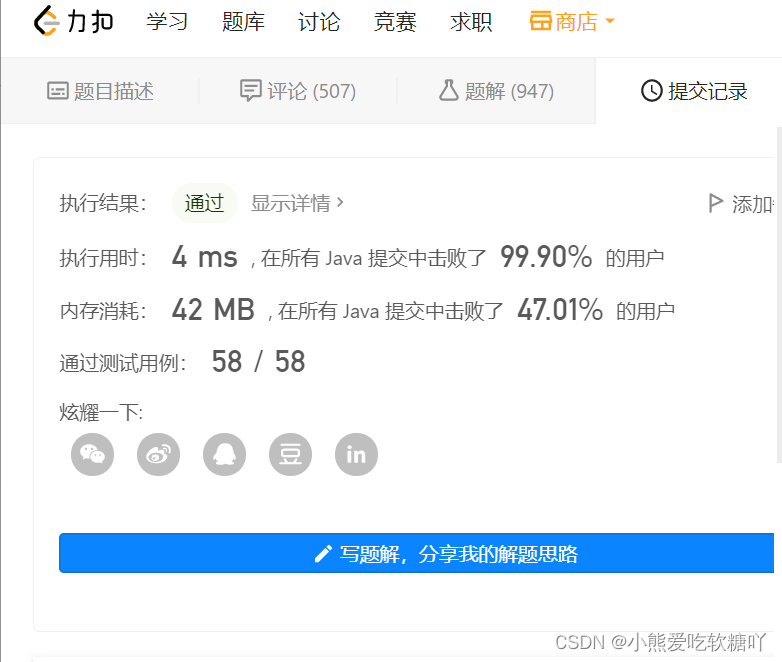
五、双端队列
双端队列(deque)是指允许两端都可以进行入队和出队操作的队列,deque 是 “double ended queue” 的简称。那就说明元素可以从队头出队和入队,也可以从队尾出队和入队。Deque是一个接口,使用时必须创建LinkedList的对象。
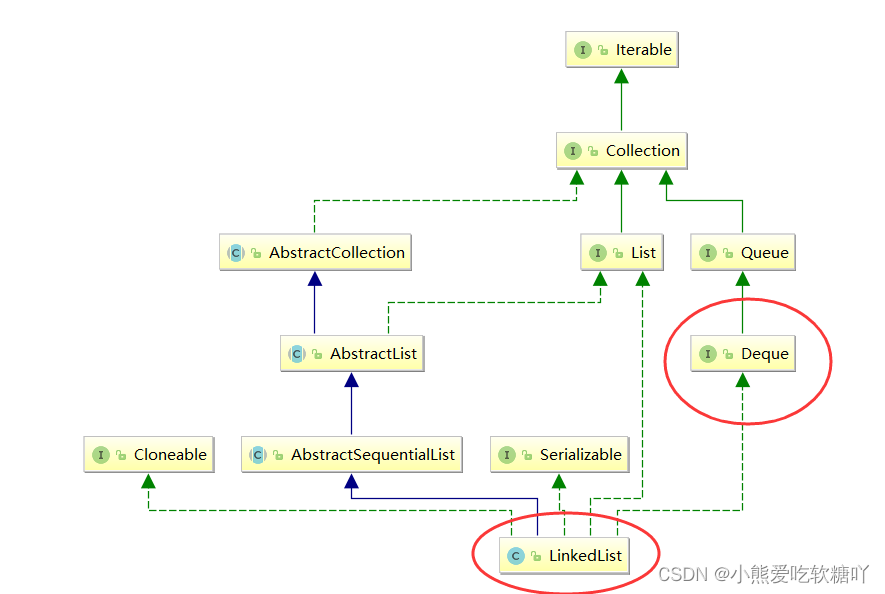
六、队列相关练习题
难度简单632
请你仅使用两个队列实现一个后入先出(LIFO)的栈,并支持普通栈的全部四种操作(
push、top、pop和empty)。实现
MyStack类:
void push(int x)将元素 x 压入栈顶。int pop()移除并返回栈顶元素。int top()返回栈顶元素。boolean empty()如果栈是空的,返回true;否则,返回false。注意:
- 你只能使用队列的基本操作 —— 也就是
push to back、peek/pop from front、size和is empty这些操作。- 你所使用的语言也许不支持队列。 你可以使用 list (列表)或者 deque(双端队列)来模拟一个队列 , 只要是标准的队列操作即可。
示例:
输入: ["MyStack", "push", "push", "top", "pop", "empty"] [[], [1], [2], [], [], []] 输出: [null, null, null, 2, 2, false] 解释: MyStack myStack = new MyStack(); myStack.push(1); myStack.push(2); myStack.top(); // 返回 2 myStack.pop(); // 返回 2 myStack.empty(); // 返回 False
class MyStack {
private final Queue<Integer> queue1=new LinkedList<>();
private final Queue<Integer> queue2=new LinkedList<>();
private Queue<Integer> 存元素的队列=queue1;
private Queue<Integer> 辅助队列=queue2;
public MyStack() {
}
public void push(int x) {
存元素的队列.offer(x);
}
public int pop() {
int size=存元素的队列.size();
for(int i=0;i<size-1;i++){
辅助队列.offer(存元素的队列.poll());
}
int e=存元素的队列.poll();
Queue<Integer> tmp=辅助队列;
辅助队列=存元素的队列;
存元素的队列=tmp;
return e;
}
public int top() {
int size=存元素的队列.size();
for(int i=0;i<size-1;i++){
辅助队列.offer(存元素的队列.poll());
}
int e=存元素的队列.poll();
Queue<Integer> tmp=辅助队列;
辅助队列=存元素的队列;
存元素的队列=tmp;
存元素的队列.offer(e);
return e;
}
public boolean empty() {
return 存元素的队列.isEmpty();
}
} 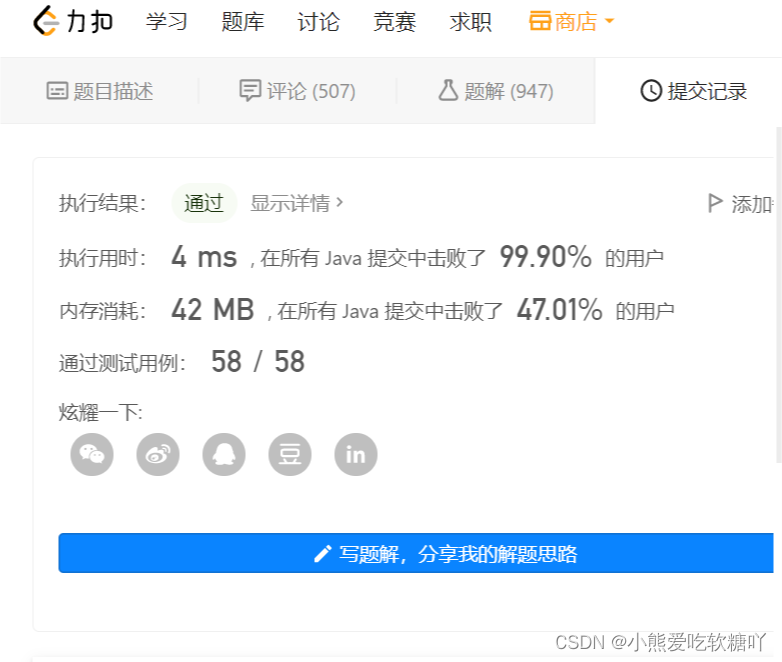

























 3923
3923











 被折叠的 条评论
为什么被折叠?
被折叠的 条评论
为什么被折叠?










